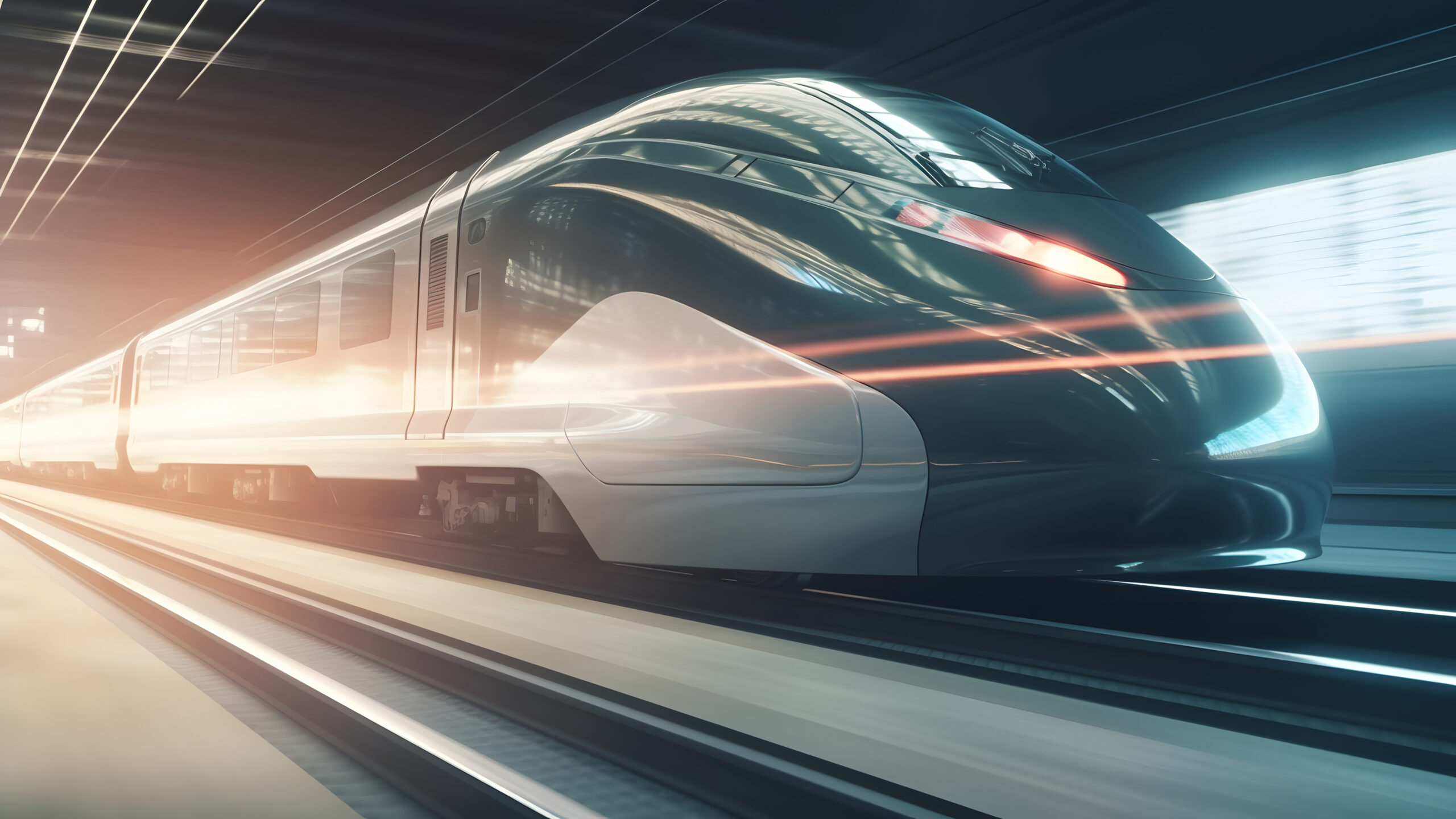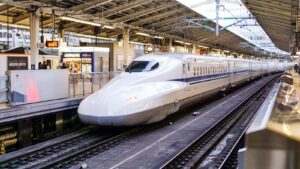Japan’s pioneering spirit in the realm of high-speed rail travel has once again taken a giant leap forward with the development of the Maglev train. This cutting-edge technology, which allows trains to float above tracks using magnetic levitation, is setting the stage for a new era in transportation. Not only does the Maglev train boast record-shattering speeds, but it also represents a significant achievement in engineering, environmental consideration, and the potential to transform how we think about distance and connectivity. As Japan continues to lead the way in Maglev technology, the world watches with keen interest to see how this revolutionary mode of transport will reshape the future of rail travel.
Japan’s Maglev Train: A Leap into the Future
The Maglev train, short for magnetic levitation, is Japan’s bold step into the future of transportation. By eliminating the friction between train and track, the Maglev can achieve speeds unheard of by conventional trains. This technology is not only a testament to Japan’s innovation in transport but also sets a new standard for rail systems worldwide. The development of the Maglev train underscores Japan’s commitment to pushing the boundaries of what is possible in high-speed rail travel, making journeys faster, smoother, and more efficient.
Breaking Speed: The Maglev’s Record-Shattering Journey
In 2015, Japan’s Maglev train made headlines around the world when it reached a breathtaking speed of 603 kilometers per hour (375 miles per hour) during a test run, setting a new world record for rail speed. This remarkable feat shone a spotlight on the potential of magnetic levitation technology to revolutionize how we travel. The Maglev’s ability to break speed records while maintaining a smooth and quiet ride highlights the advanced engineering and innovation behind this transformative mode of transportation.
Engineering Marvel: How Maglev Defies Gravity
The science behind the Maglev train is a marvel of modern engineering. By utilizing powerful superconducting magnets, the train is lifted off its tracks, eliminating nearly all friction and allowing it to achieve unprecedented speeds. This magnetic levitation is achieved through a combination of onboard superconducting magnets and coils embedded in the track, which together create the magnetic fields necessary to lift and propel the train forward. The precise control of these magnetic forces is what allows the Maglev to glide seamlessly through the air, making it one of the most sophisticated and technologically advanced trains in operation today.
The Path to Maglev: Japan’s Bold Vision
Japan’s journey to develop the Maglev train began in earnest in the 1960s, with the goal of creating a faster, more efficient mode of transport that could meet the demands of the country’s growing population and economy. Over the decades, this vision has been realized through relentless research, development, and testing, culminating in the cutting-edge Maglev system we see today. The path to Maglev has been one of determination, ingenuity, and a steadfast belief in the transformative power of technology.
Inside the Maglev: A Glimpse of Futuristic Travel
Step inside Japan’s Maglev train, and you are immediately transported into the future of rail travel. The sleek, modern interiors are designed for comfort and efficiency, offering passengers a quiet, smooth ride at speeds that make long distances feel significantly shorter. Features such as streamlined seating, advanced reservation systems, and real-time travel information enhance the passenger experience, making the Maglev not just a mode of transport, but a truly futuristic travel experience.
Eco-Friendly at High Speed: The Green Tech of Maglev
Despite its high speeds, the Maglev train is also a model of environmental sustainability. Its magnetic levitation system means that it uses significantly less energy than conventional trains, with no direct emissions during operation. Additionally, the Maglev’s efficiency and speed can help to reduce the reliance on air travel, a much higher carbon-emitting option. Japan’s investment in Maglev technology is not just an investment in speed and efficiency, but also in a greener, more sustainable future for transportation.
The Maglev Route: Connecting Cities at Lightning Speed
The planned Chuo Shinkansen route, which will eventually connect Tokyo and Osaka via the Maglev train, is set to redefine intercity travel in Japan. By reducing travel time between these two major cities by half, to just over an hour, the Maglev will facilitate greater economic integration and mobility. The route, passing through the mountainous terrain of the Japanese Alps via deep tunnels, is a testament to the country’s ambition and engineering prowess, promising to bring cities closer together at unparalleled speeds.
Overcoming Obstacles: Challenges in Maglev Development
The journey to bring the Maglev train to fruition has not been without its challenges. High construction costs, environmental concerns, and the technical complexities of implementing a nationwide Maglev network have all posed significant hurdles. Yet, through innovative engineering solutions, extensive safety testing, and a comprehensive approach to environmental impact assessments, Japan is overcoming these obstacles, demonstrating a commitment to realizing the full potential of Maglev technology.
Maglev Economics: Cost, Benefits, and Impact
The economic implications of Japan’s Maglev train are profound, both in terms of the initial investment required and the anticipated benefits. While the cost of developing and constructing the Maglev system is substantial, the expected returns in terms of reduced travel time, increased connectivity, and environmental benefits are significant. The Maglev is poised to boost economic growth, promote regional development, and position Japan as a leader in high-speed rail technology on the global stage.
Global Race: How Japan Leads in Maglev Technology
In the global race to develop high-speed rail, Japan’s Maglev train positions the country at the forefront of innovation. As nations around the world explore ways to improve their transport infrastructure, the success of Japan’s Maglev offers valuable insights into the future of rail travel. With its unparalleled speed, efficiency, and green technology, the Maglev stands as a model for what is possible, inspiring other countries to consider magnetic levitation as a viable and transformative option for high-speed transport.
Future Stations: Expanding the Maglev Network
Looking ahead, Japan has ambitious plans to expand the Maglev network, extending its transformative impact across the country and beyond. By connecting more cities with Maglev technology, Japan aims to create a comprehensive, high-speed transport network that can meet the demands of the 21st century. This expansion will not only enhance domestic mobility but also set a new global standard for rail travel, marking the next chapter in the Maglev’s revolutionary journey.
Beyond Japan: The Maglev’s Potential Worldwide Impact
The success of Japan’s Maglev train has implications far beyond its borders. As countries around the world grapple with the challenges of modernizing their transportation systems, the Maglev offers a compelling blueprint for the future. Its combination of speed, efficiency, and environmental sustainability presents a powerful case for the adoption of magnetic levitation technology globally. As Japan continues to lead by example, the Maglev train stands as a testament to the transformative potential of innovation and a beacon for the future of rail travel worldwide.
Japan’s Maglev train is more than just a feat of engineering; it is a symbol of progress, a vision of the future of transportation realized. As it moves from concept to completion, the Maglev encapsulates Japan’s commitment to innovation, sustainability, and global leadership in rail technology. With each record-breaking speed and each mile of track laid, the Maglev train is not only reshaping the landscape of Japanese transport but also inspiring a global reimagining of what is possible in the realm of high-speed rail. As we look to the future, the Maglev train stands as a beacon of innovation, propelling us towards a new era of connectivity and environmental responsibility.






